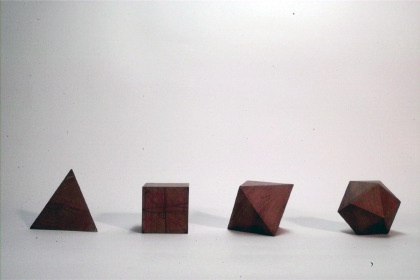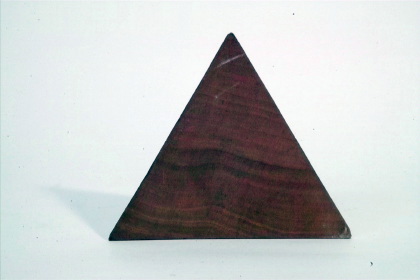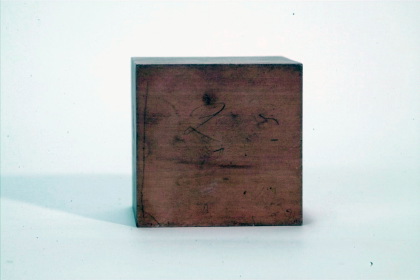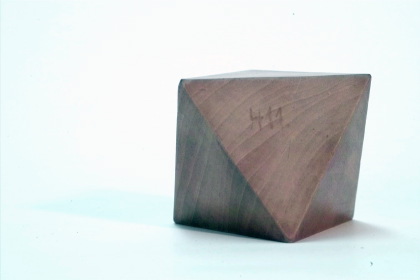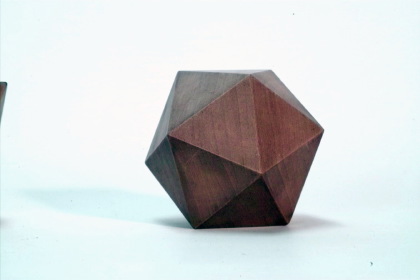Regular tetrahedron, hexahedron, octahedron, icosahedron
Model 411
Description
Regular tetrahedron, hexahedron, octahedron, icosahedron. Wood (small).
Photos of 3D printsAdditions
Depicted are the regular convex polyhedra tetrahedron, hexahedron, octahedron, and icosahedron, which are also called Platonic solids.
All these polyhedrons (a polyhedron is a three-dimensional object that has simple polygons as faces) are convex, their faces consist of congruent, regular polygons respectively, and the same number of faces meets in each vertex. This is why the Platonic solids sometimes are called entirely regular polyhedra.
Platonic solids have the follwoing properties:
- All faces are regular polygons.
- The distance from the center to each vertex is constant throughout the polyhedron.
- Circumscribed sphere, midsphere, and inscribed sphere can be constructed (due to the symmetry of vertices, edges, and faces).
There are precisely five Platonic solids. This fact can be shown with a proof that leads back to Euclid. In addition to the four polyhedra, there is the dodecahedron, a solid consisting of 12 faces made up of regular pentagons. It is not clear why this particular solid is not part of the series.
The Platonic solids have been studied ever since ancient times. Their name is due to the Greek philosopher Platon (ca. 427-347 BC) who incorporated these solids into his philosophical system by assigning them to the five elements: earth (hexahedron), water (icosahedron), fire (tetrahedron), air (octahedron), and void (dodecahedron).
The mathematician and astronomer Johannes Kepler (1571-1630) made use of the Platonic solids in his astronomical calculations such as determining the distances of the planets.
Showcase of this model is Case number 21
References
Hilbert, D.; Cohn-Vossen(1932). Anschauliche Geometrie, Springer-Verlag, Berlin, p. 79 f.. Online version


